Quick Airline Information:
✈Airline IATA* code: QF
✈Airline ICAO* code: QFA ✈Founded: 16 Nov 1920 ✈Website: www.qantas.com✈Alliance: Oneworld✈History
✈Operations and Destinations 🌍
✈Fleet ✈️
✈Photo Slide 📷✈Safety Video 🎬
✈Airline reviews ⭐
*IATA: (International Air Transport Association)
*ICAO: (International Civil Aviation Organization)
History Menu:
Qantas is the national airline of Australia, founded in Winton, Queensland on 16 November 1920. The word QANTAS stands for Queensland And Northern Territory Aerial Services Limited. Paul McGinness and Hudson Fysh Fergus McMaster joined as Chairman, and Arthur Baird took care of aircraft maintenance. The airline's first aircraft was an Avro 504K. The aircraft had a cruising speed of 105 kilometres per hour and carried one pilot and two passengers. The airline started operating air mail services subsidised by the Australian government, linking railheads in western Queensland.
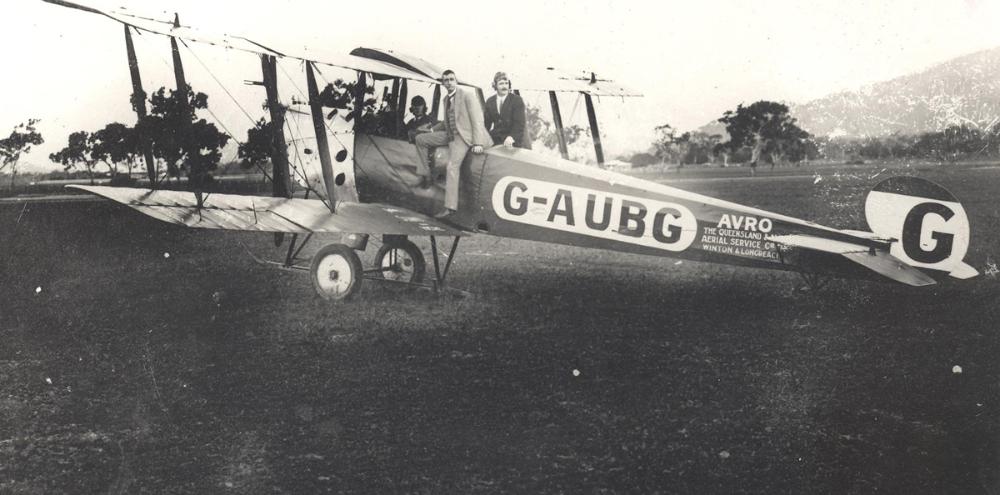
Between 1926 and 1928, Qantas built seven de Havilland DH.50s and a single DH.9 under licence in its Longreach hangar. In 1928 a chartered Qantas aircraft made the inaugural flight of the Royal Flying Doctor Service of Australia, departing from Cloncurry.
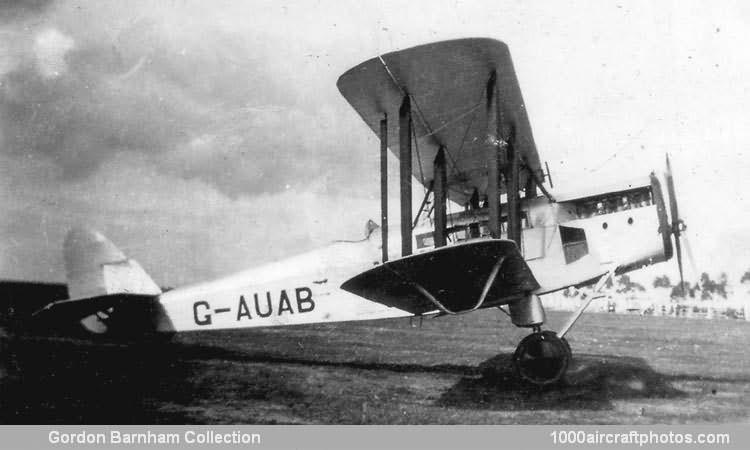
In 1934, QANTAS Limited and Britain's Imperial Airways formed a new company, Qantas Empire Airways Limited (QEA). The new airline commenced operations in December 1934 flying between Brisbane and Darwin using obsolescent DH.50 and de Havilland DH.61 biplanes. QEA flew internationally from May 1935, when the service from Darwin was extended to Singapore using newer de Havilland DH.86s. Imperial Airways operated the rest of the service through to London. In July 1938 this operation was replaced by a thrice weekly flying boat service using Shorts S.23 Empire flying boats. The Sydney to Southampton service took nine days, with passengers staying in hotels overnight. After Italy entered the war in June 1940, this became the Horseshoe Route between Sydney and Durban in South Africa with the South Africa – UK stage being by sea. This service was a vital line of communication between Australia and the United Kingdom and lasted through until Singapore fell in February 1942.
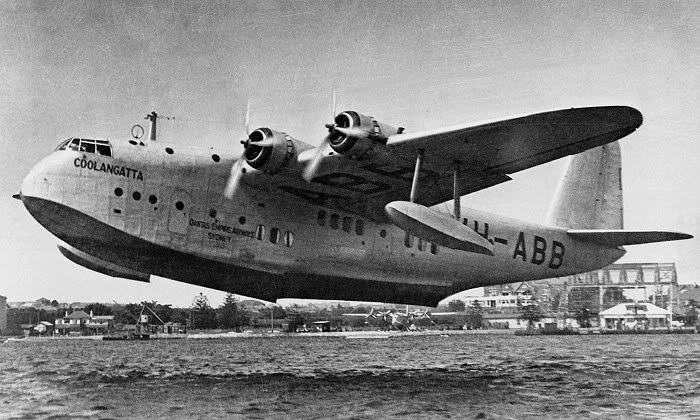
Flying boat services were resumed with American-built Consolidated PBY Catalinas on 10 July 1943, with flights between Swan River, Perth and Koggala lake in Ceylon (now Sri Lanka). This linked up with the British Overseas Airways Corporation (BOAC, the successor airline to Imperial Airways) service to London, maintaining the vital communications link with England.
In 1944 the Catalinas were augmented by conventional Consolidated B-24 Liberators, flying from Ratmalana via RAF Minneriya for refueling and then across the ocean to Learmonth. Later, Avro Lancastrians were flown on the route. They flew from Sydney to Gawler, stopping in Adelaide for refuelling, and on to Learmonth for the overnight stage. The service was renamed the Kangaroo Service and the passenger award became The Order of the Longest Hop. It was on this route that the Kangaroo logo was first used. After the war, the return trip could also go from Colombo to the Cocos Islands, then to Perth on to Sydney. These flights continued until 5 April 1946.
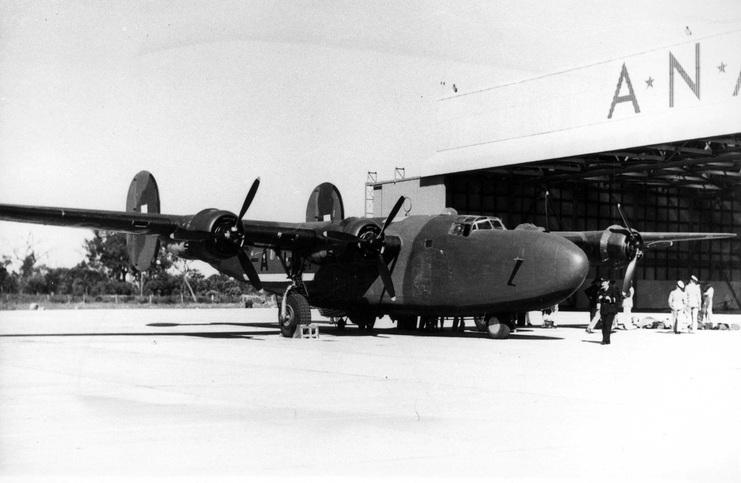
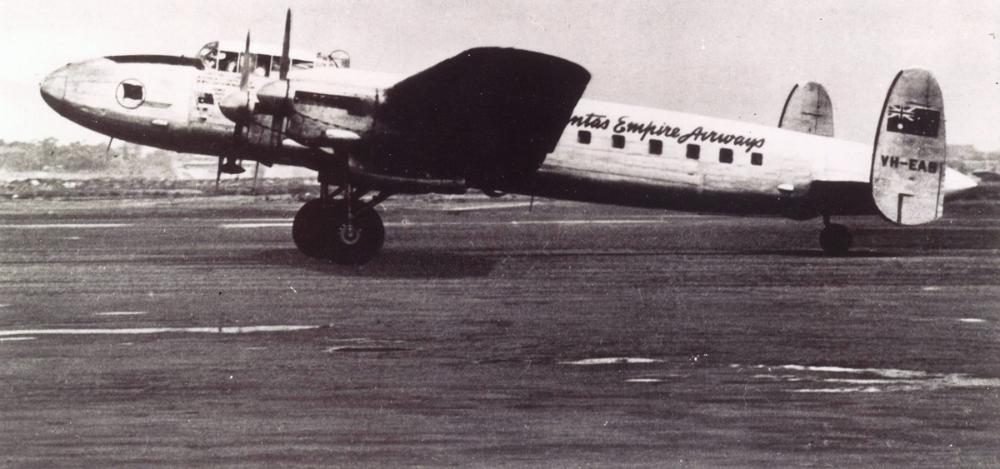
In 1947, QEA was nationalised, with the Australian Labor government led by Prime Minister Ben Chifley buying the shares owned by BOAC, followed by those of QANTAS Limited. Nationalised airlines were normal at the time, and the Qantas board encouraged this move. After the completion of the buyout, QANTAS Limited was wound up and liquidated to shareholders.
Shortly after nationalisation, QEA began its first services outside the British Empire to Tokyo via Darwin and Manila with Avro Lancastrian. These aircraft were also deployed between Sydney and London in co-operation with BOAC, but were soon replaced by Douglas DC-4s in 1949. Services to Hong Kong began around the same time. In 1947 the airline took delivery of Lockheed L-749 Constellations and these took over the trunk route to London. Flying boats again entered the fleet from 1950, when the first of five Short Sandringham aircraft entered service for flights between the Rose Bay flying boat base on Sydney Harbour and destinations in New Caledonia, New Hebrides, Fiji, New Guinea and Lord Howe Island.
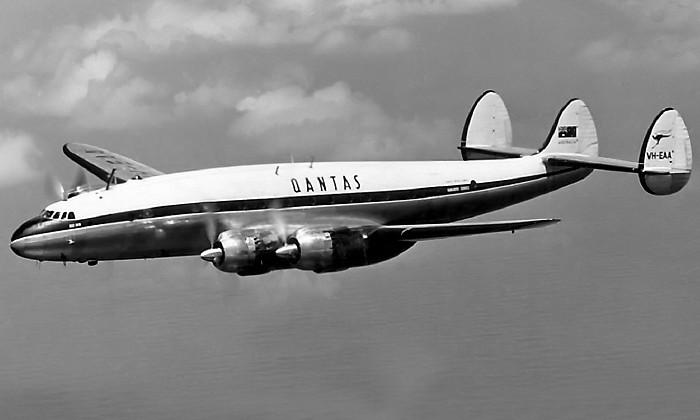
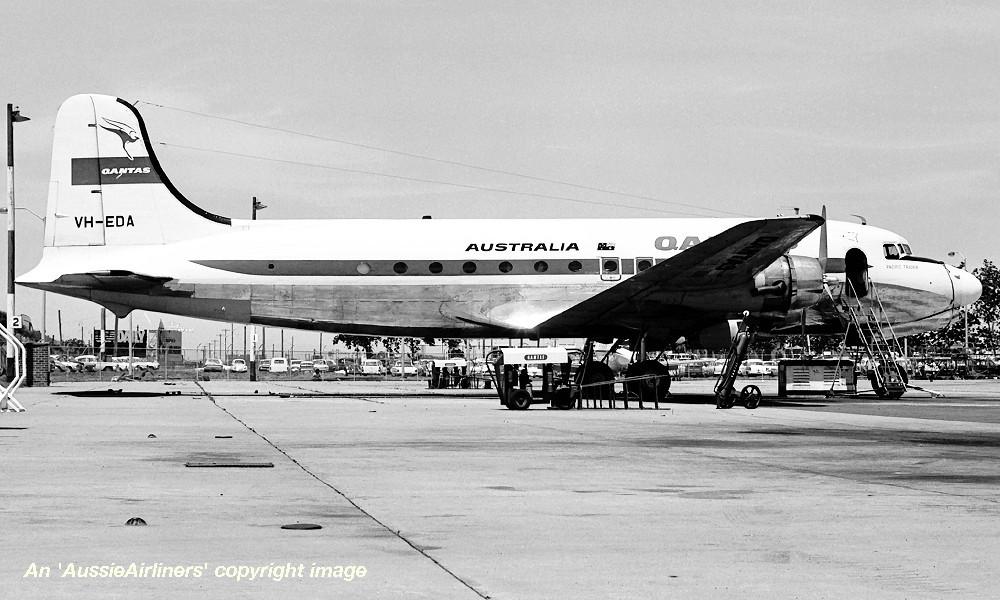
In 1952 Qantas expanded services across the Indian Ocean to Johannesburg via Perth, the Cocos Islands and Mauritius, calling this the Wallaby Route. The network expanded across the Pacific to Vancouver via Auckland, Nadi, Honolulu and San Francisco in early 1954 when it took over the Southern Cross Route of British Commonwealth Pacific Airlines (BCPA). The first of the airline's Lockheed 1049 Super Constellations was delivered in early 1954.
In January 1958 Qantas became the second round-the-world airline, flying Super Constellations west from Australia to London through Asia and the Middle East on the Kangaroo route, and east to London on the Southern Cross route. It took delivery of new turboprop Lockheed Electra aircraft in 1959.
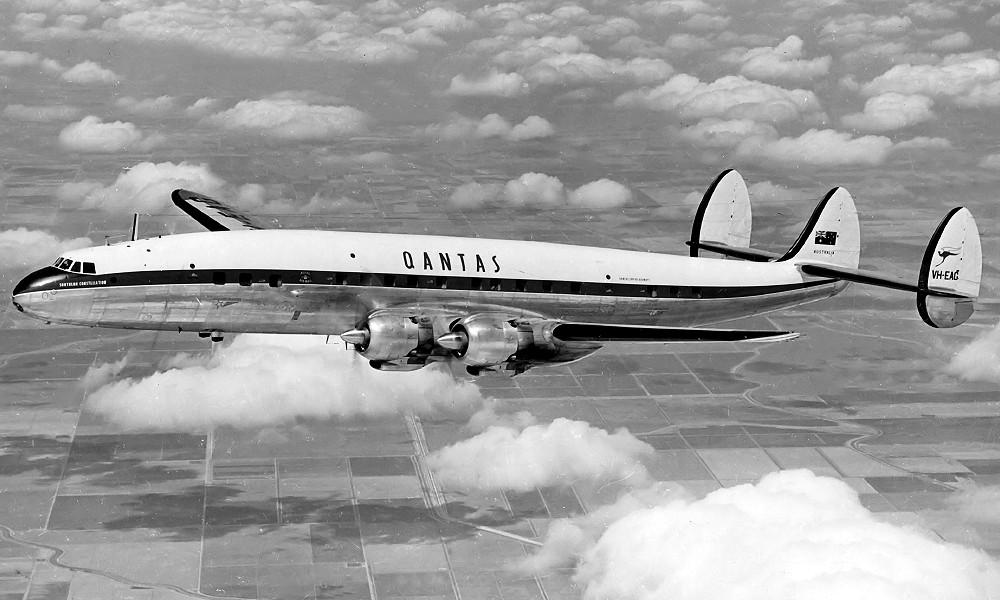
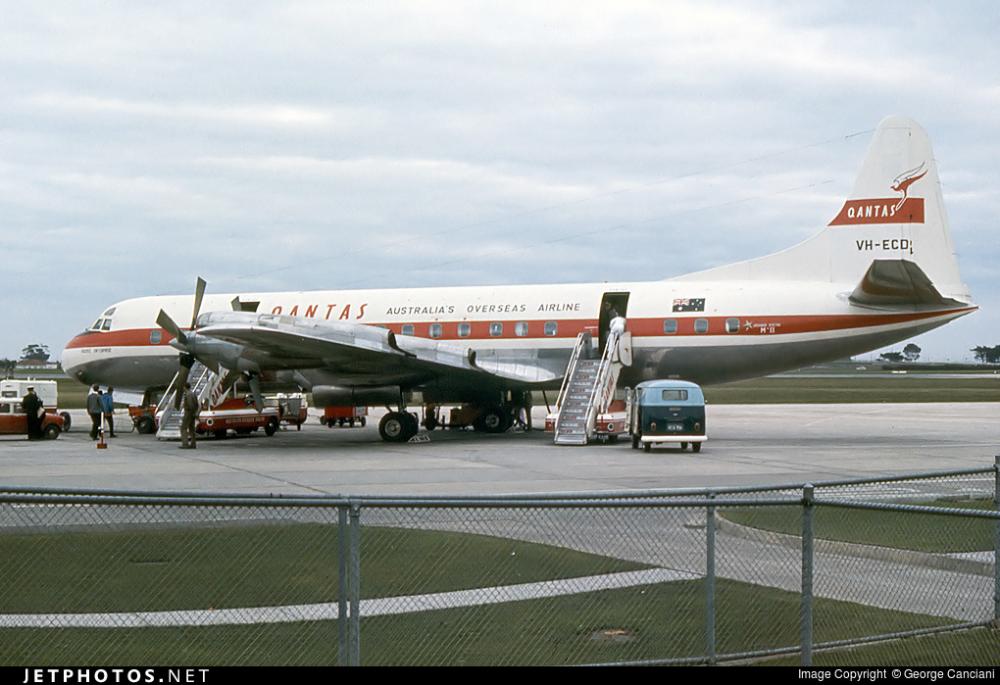
In September 1956 Qantas ordered the Boeing 707 jet airliner and the first was delivered in June 1959. This order made the airline the first customer for the type outside the US. In March 1960 the airline ordered six of the turbofan derivative, Boeing 707-138B, with delivery scheduled for the following year. The first Qantas jet service was on 29 July 1959 from Sydney to San Francisco via Nadi and Honolulu. On 5 September 1959 Qantas became the third airline to fly jets across the North Atlantic, after BOAC and Pan Am, operating between London and New York as part of the service from Sydney.
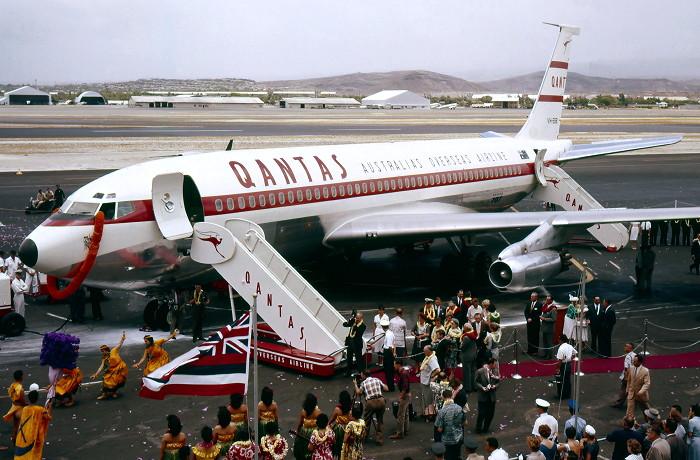
Air travel grew substantially in the early 1960s, so Qantas ordered the larger Boeing 707-338C series of aircraft. While waiting for these to be delivered, Qantas operated six de-Havilland Comet 4 aircraft wet leased from BOAC between 7 November 1959 to 30 May 1963. The same year, Qantas placed early options on the new Concorde airliner but the orders were eventually cancelled. Also in 1966, the Fiesta route opened from Sydney to London via Fiji, Tahiti, Mexico City, Acapulco, Nassau and Bermuda.
In September 1965 Qantas launched the first V-Jet service on the Kangaroo Route, via Kuala Lumpur, Malaysia. In 1967 the airline placed orders for the Boeing 747. This aircraft could seat up to 350 passengers, a major improvement over the Boeing 707. Orders were placed for four aircraft with deliveries commencing in 1971. Also in 1967, Qantas Empire Airways changed its name to Qantas Airways, the name of the airline today.
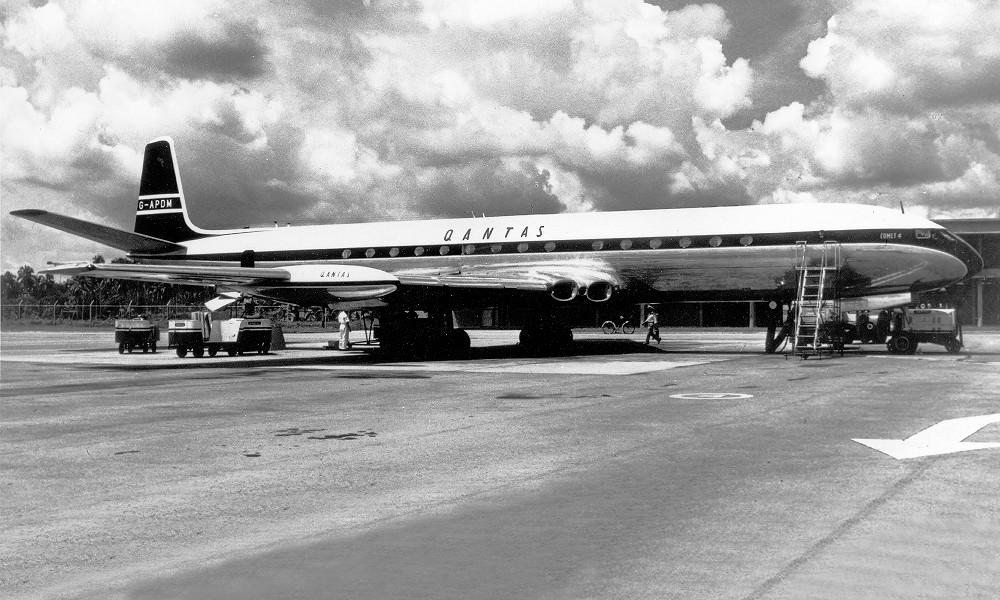
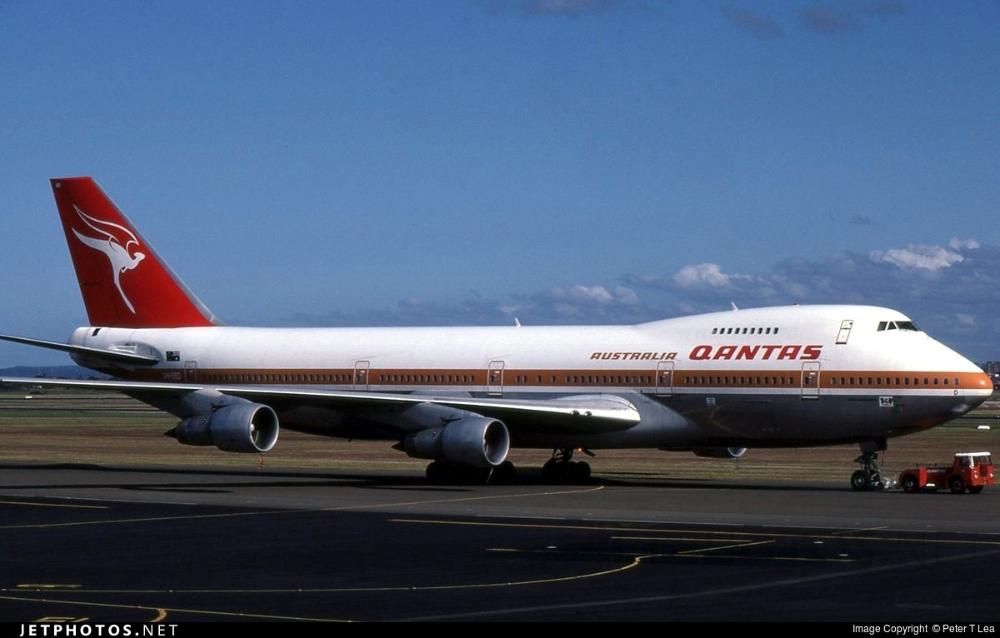
At the end of the 70's, Qantas placed options on two McDonnell Douglas DC10 aircraft for flights to Wellington, New Zealand. These were not taken up, and two Boeing 747SPs were ordered instead. In March 1979, Qantas operated its final Boeing 707 flight from Auckland to Sydney, and became the only airline in the world to have a fleet that consisted of Boeing 747s only. That same year Qantas introduced Business class, it was the first airline in the world to do so.
In 1984, a new refreshed logo designed by Hans Hulsbosch and his company Hulsbosch Communications debuted, dropping the wings from the kangaroo. The Boeing 767–200 was introduced in 1985, for New Zealand, Asia and Pacific routes. The same year, the Boeing 747–300 was introduced, featuring a stretched upper deck. The Boeing 747 fleet was upgraded from 1989 with the arrival of the new Boeing 747-400 series.
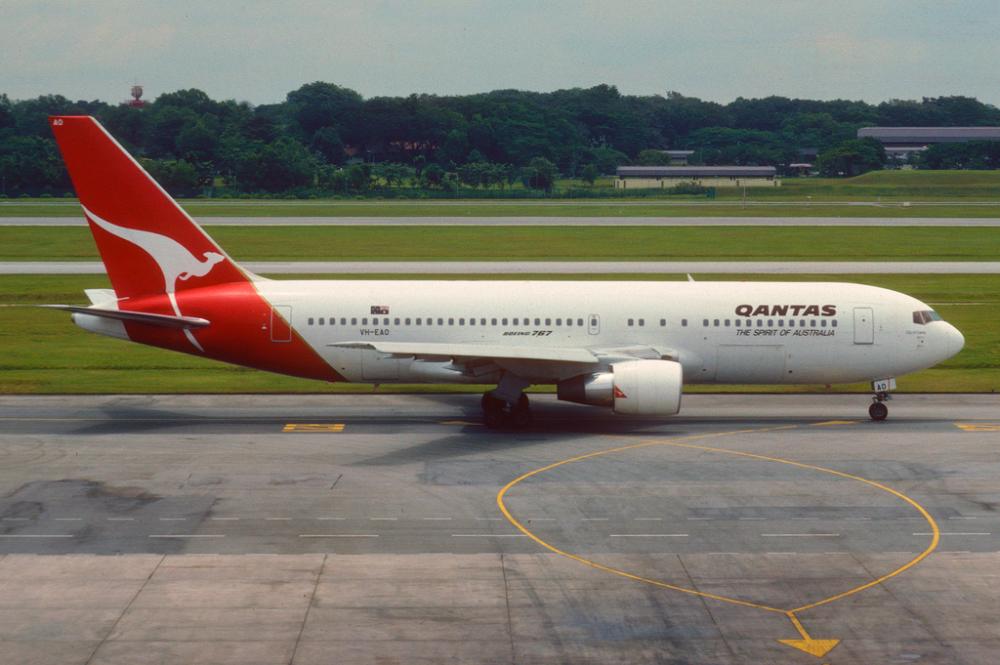
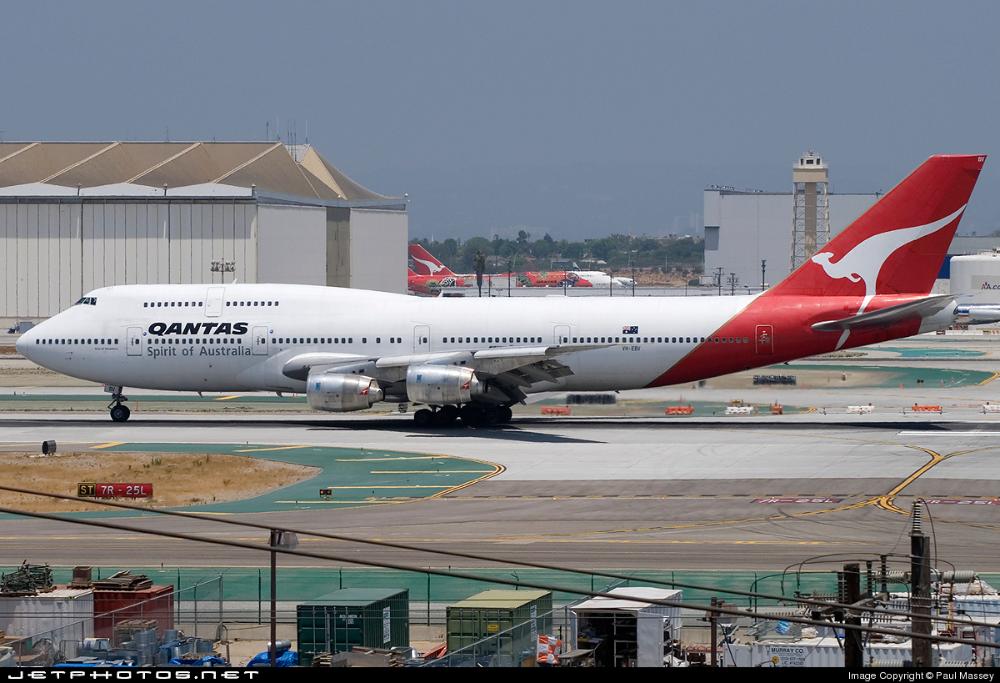
In 1990, Qantas established Australia Asia Airlines to operate services to Taiwan. Several Boeing 747SP and Boeing 767 aircraft were transferred from Qantas service. The airline ceased operations in 1996. The Australian Government sold the domestic carrier Australian Airlines to Qantas in August 1992, giving it access to the national domestic market for the first time in its history. The purchase saw the introduction of the Boeing 737 and Airbus A300 to the fleet, though the A300s were soon retired. Qantas was privatised in March 1993, with British Airways taking a 25% stake in the airline.
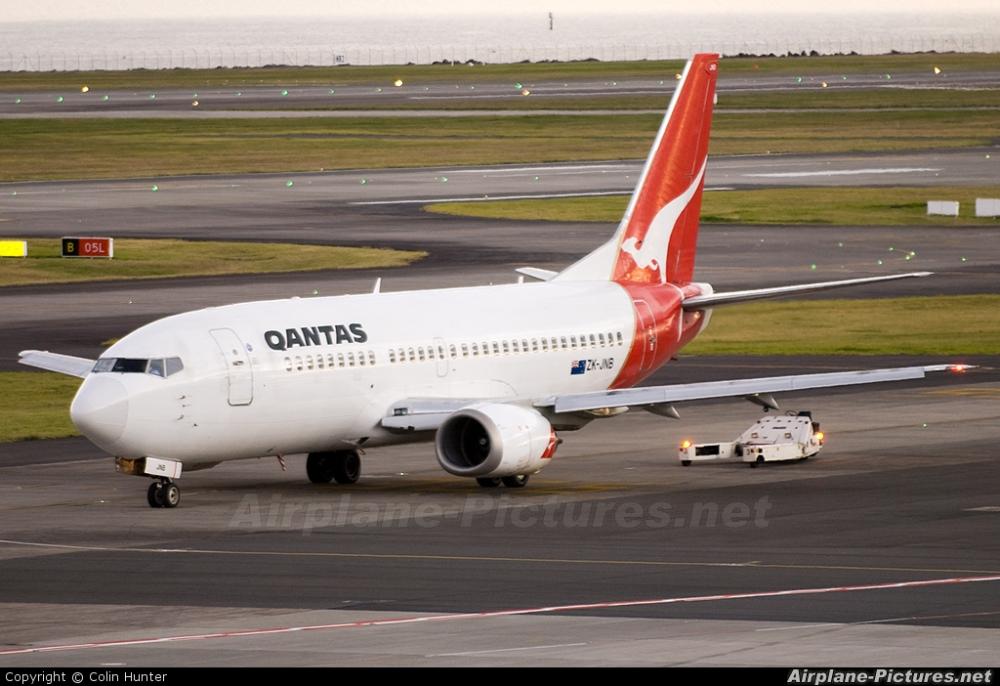
In 1998, Qantas co-founded the Oneworld alliance with American Airlines, British Airways, Canadian Airlines, and Cathay Pacific. The alliance commenced operation in February 1999. Qantas ordered twelve Airbus A380-800s in 2000, with options for twelve more. Eight of these options were exercised in 2006, bringing firm orders to twenty. Qantas was the third airline to receive A380s, after Singapore Airlines and Emirates. The main domestic competitor to Qantas, Ansett Australia, collapsed on 14 September 2000. Market share for Qantas immediately neared 90%, with the relatively new budget airline Virgin Blue holding the remainder. To capitalise on this event, Qantas ordered Boeing 737–800 aircraft. At the same time, Virgin Blue announced a major expansion in October 2001, Qantas responded by creating a new cut-price subsidiary airline, Jetstar Airways.
Qantas received its first Airbus A330, for its trunk domestic routes and overseas operations in 2002. Qantas also expanded into the New Zealand domestic air travel market, firstly with a shareholding in Air New Zealand and then with a franchise takeover of Ansett New Zealand. In 2003, Qantas, introduced the Jetstar low cost model to New Zealand. British Airways sold its 18.5% stake in Qantas in September 2004.
.jpg)
.jpg)
.jpg)
On 14 December 2005 Qantas announced an order for 115 Boeing 787–8 and 787– 9 aircraft. The aircraft allowed Qantas to replace its Boeing 767–300 fleet, increase capacity and establish new routes. The first of the 787s were originally scheduled to be delivered in August 2008, with the 787-9s coming in 2011. However, on 10 April 2008 Qantas announced that the intended August delivery of the 787s has been delayed for a further 15 months from the original delivery date.
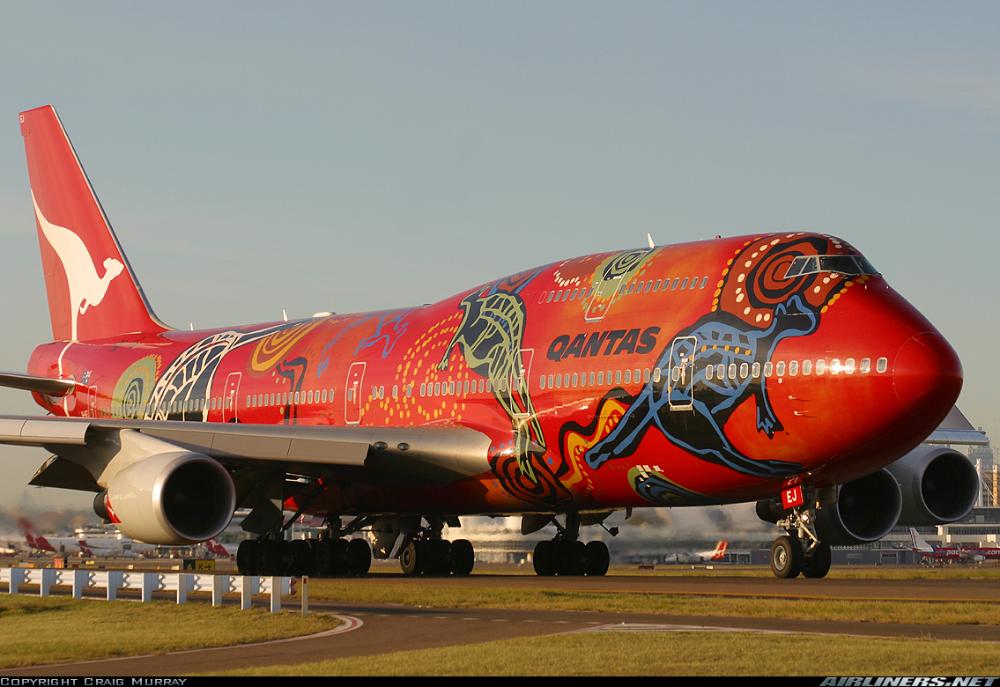
Also in 2008 the first Qantas Airbus A380 was handed over by Airbus at a ceremony on 19 September. Qantas' first route for the A380 was Melbourne to Los Angeles beginning on 20 October 2008, then from Sydney to Los Angeles. Subsequent aircraft to be delivered will further expand services, initially on the Kangaroo Route.
On 2 December 2008, British Airways confirmed that talks were underway regarding a possible merger between the two companies. However, the two companies called off their merger discussions over ownership issues. On 29 December 2008, Qantas flew its last scheduled Boeing 747–300 service, operating from Melbourne to Los Angeles via Auckland. In the wake of the Global Financial Crisis Qantas says it could "ditch" some first class seats on some short International routes to maximise profits.
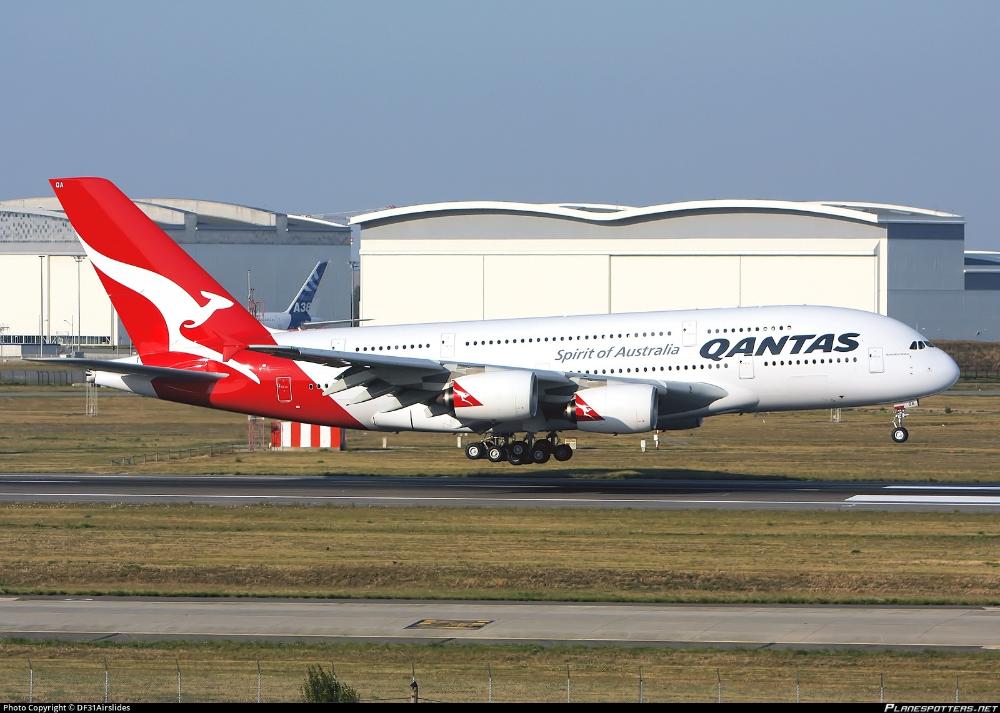
In 2012, Qantas reported a loss, citing high fuel prices, intense competition and industrial disputes. This was the first full year loss since Qantas was fully privatised 17 years previously, in 1995, and led to the airline cancelling its order of 35 new Boeing 787 Dreamliner aircraft, to reduce its spending. Also in that year on 26 March 2012, Qantas announced it would set up Jetstar Hong Kong with China Eastern Airlines Corporation, which was intended to begin flights in 2013, but became embroiled in a protracted approval process.
Qantas and Emirates began an alliance on 31 March 2013, in which their combined carriers offered 98 flights per week to Dubai, Losses continued into 2014 reporting year. In February 2014 additional cost-cutting measures to save A$2 billion, including the loss of 5,000 jobs. The carrier also reduced the size of its fleet by retiring aircraft and deferring deliveries; and planned to sell some of its assets.
The airline returned to profit in 2015, it also sold its lease of Terminal 3 at Sydney Airport, which was due to continue until 2019, back to Sydney Airport Corporation. After the airline profits share in 2015, Qantas announced that it had ordered eight Boeing 787-9s to serve the first non-stop intercontinental routes from Australia to London, starting with Perth and eventually adding Melbourne and Sydney to the network.
In October 2016, Qantas' flying kangaroo was redesigned. The triangular container was reshaped to resemble the tail fin of a modern aircraft. The roo graphic was changed by losing some details such as the arms and bolstered with some gradated areas to simulate a three-dimensional feel. On Saturday, 24 March 2018, a Boeing 787-9 Dreamliner was the first ever scheduled non-stop commercial flight between Australia and Europe. Flight QF9, was a 17- hour, 14,498 km journey from Perth to London Heathrow.
Also 2018 saw the airline switching its strategic transit point for Australia bound passengers from Dubai to Singapore after the airline changed its plans and focussed on the increase of traffic from the Asian markets. However the deal it made with Emirates back in 2013, continued for an additional 5 years with codeshare flights operated by Emirates.
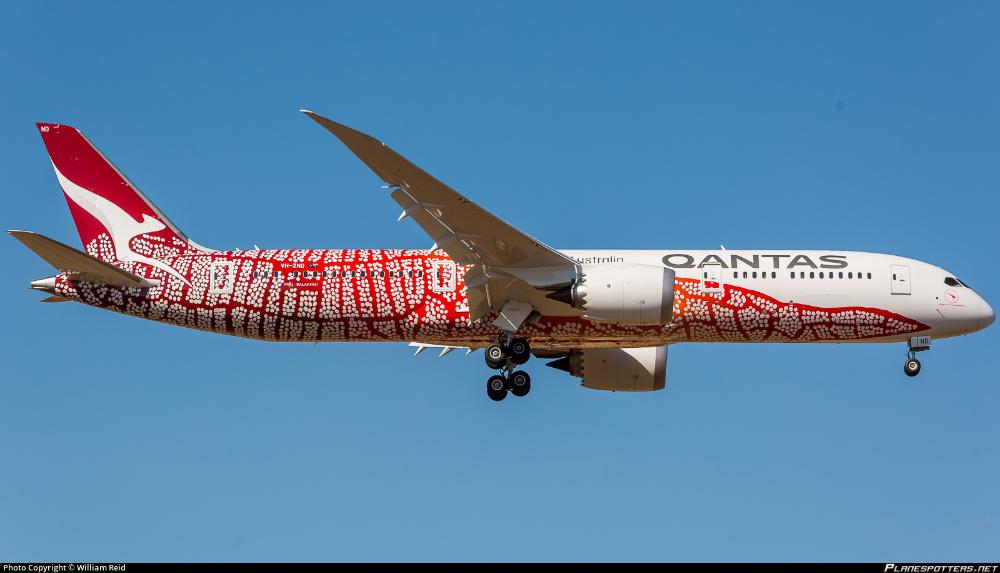
During 2019, Qantas turned its attention to the upgrading and retrofitting its fleet of 12 Airbus A380 with new cabin and seats and increase connectivity options. It also set to receive more Boeing 787-9 to deploy them on the international routes across the pacific, asia and Europe. It has transferred many routes to its low cost subsidiary airline Jetstar and looking to open up new routes.
History Source: Wikipedia.org + Qantas.com
Operations and Destinations 🌍:
Qantas flies to 20 domestic destinations and 21 international destinations in 14 countries across Africa, the Americas, Asia, Europe and Oceania. Various subsidiary airlines operate to regional airports and on some trunk routes within Australia under the QantasLink banner. Qantas also owns Jetstar Airways, the low-cost airline that operates both international services from Australia and domestic services within Australia and New Zealand.
Qantas hubs are located in Sydney, Melbourne, Brisbane, Perth and Adelaide.
The Qantas group flies to the following destinations (Included are those destinations served by QantasLink and Jetstar Airways routes in Australia and New Zealand):
| Region 🗺️ | Destinations 🌍🌎🌏 |
|---|---|
| ✈Australia (domestic) | Adelaide, Albury, Alice Springs, Armidale, Avalon, Ayers Rock, Ballina, Barcaldine, Bendigo, Blackall, Brisbane, Broome, Bundaberg, Cairns, Canberra, Charleville, Christmas Creek, Cloncurry, Coffs Harbour, Darwin, Devonport, Dubbo, Emerald, Exmouth, Fraser Coast, Geraldton, Gladstone, Gold Coast, Hamilton Island, Hervey Bay, Hobart, Horn Island, Kalgoorlie, Kangaroo Island, Karratha, Kununurra, Launceston, Longreach, Lord Howe Island, Mackay, Melbourne, Mildura, Moranbah, Moree, Mount Hotham, Mount Isa, Newcastle, Newman, Olympic Dam, Paraburdoo, Perth, Port Hedland, Port Lincoln, Port Macquarie, Proserpine, Rockhampton, Roma, Sunshine Coast, Sydney, Tamworth, Toowoomba, Townsville, Wagga Wagga, Weipa, Whyalla |
| ✈New Zealand and Oceania | Auckland, Christchurch, Dunedin, Napier, Nelson, New Plymouth, Palmerston North, Queenstown, Wellington, Port Moresby, Nouméa. |
| ✈Asia | Bangkok, Beijing, Denpasar, Hong Kong, Jakarta, Manila, Osaka, Phuket, Shanghai, Singapore, Tokyo (HND, NRT) |
| ✈North America | Dallas, Honolulu, Los Angeles, New York City, San Francisco, Vancouver |
| ✈South America | Santiago de Chile |
| ✈Europe | London (LHR) |
| ✈Africa | Johannesburg |
*Destination list is for reference only. Please check directly with the airline for updates.
*Note some destinations are only seasonal.*Correct info as of Jan 2019.
Fleet ✈️:
The Qantas portofolio of aircraft include both Airbus and Boeing products suited for its short, medium and transcontinental long haul operations. The mainstream fleet totals over 130 aircraft. It also uses regional aircraft, which are operated by its regional subsidiary airline QantasLink. The fleet is undergoing a rejuvenation programme to phase out older models and harmonise the fleet for better economics.
The fleet* consists of the following aircraft, including those operated by QantasLink:
| Network 🌐 | Aircraft ✈️ |
|---|---|
| ✈Short haul and Regional | Airbus A230. Boeing 717. De Havilland Canada Dash-8, Dash-8 Q300/400. Fokker 100. (regional) Boeing 737-800 (short haul) |
| ✈Medium haul | Airbus A330-200/300 |
| ✈Long haul | Airbus A330-200, A380-800. Boeing 787-9, 747-400/ER (to be retired 2020) |
*Correct fleet info as of Jan 2019.
Qantas Photo Slide 📷:
Qantas Safety Video (B787-9) 🎬:
Reviews ⭐:
 |  |
|---|---|
| ✅ One of the oldest and most experienced airlines flying in Australia, with positive attitude in flying the "Kangaroo flag" (London-Sydney) | 👎 Limited routes flown by Qantas itself. (long haul) |
| ✅ Best Airline to fly to Australia and domestic connections. | 👎Expensive fares when flying long haul |
| ✅Professional service on board | |
| ✅Member of the Oneworld Alliance for mileage redemption. | |
| ✅Modern Long haul aircraft used. | |
| ✅ Meals and baggage included in ticket price. | |
| ✅Only Airline connecting Australia with Europe (London) non stop (from Perth). |






.png)